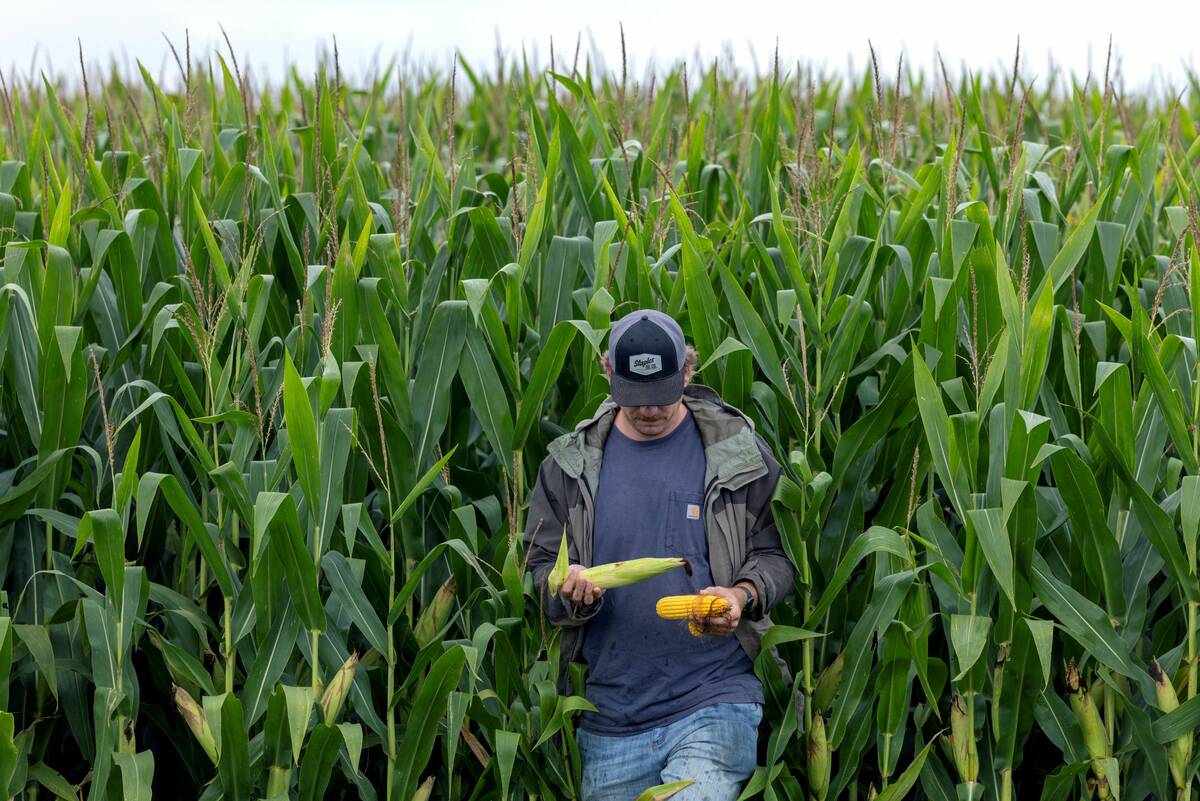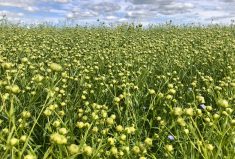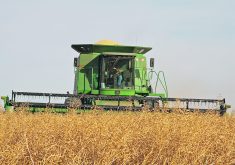Clubroot has made its presence known in the far northwest of Saskatchewan’s canola-growing region, with the discovery of a “heavily infested” field.
SaskCanola on Monday reported the discovery of the disease in a field in crop district 9B, but didn’t give its specific location. District 9B is a group of 16 rural municipalities east of Lloydminster, west of Meadow Lake and north and west of North Battleford.
“We’ve been advised that one new field in the northwest region of the province is heavily infested with clubroot,” SaskCanola executive director Janice Tranberg said Monday in a release.
Read Also

The U.S. corn crop could be the biggest ever. That’s terrible news for America’s farmers.
The USDA predicts a record corn crop for U.S. farmers, who question the agency’s accuracy amidst high debt and low crop prices.
The report follows news last week that clubroot has made its way further northwest up into Alberta’s Peace region — findings which the Canola Council of Canada said Monday “should encourage all canola growers in Western Canada to scout fields for the disease.”
“In response to this finding, SaskCanola is working with the Canola Council of Canada and the Saskatchewan ministry of agriculture to reinforce producer awareness of the clubroot management fundamentals,” Tranberg said.
A soil-borne disease of cruciferous crops, clubroot is caused by a fungus-like organism, Plasmodiophora brassicae. There are no known economically feasible controls to get it out of an infested field.
In clubroot-infected canola, swellings or galls appear on roots, cutting off a plant’s water and nutrient supplies so it prematurely ripens and dies. Typical yield losses run around 50 per cent but can run up to nearly 100 per cent in fields under severe clubroot pressure.
Clubroot is established in Canada mainly in vegetable-growing regions of Quebec, Ontario, Atlantic Canada and British Columbia. Its first appearance in Canadian canola was in Quebec in 1997, but it took until 2003 to appear on the canola-rich Prairies, near Edmonton.
Cases have since been confirmed in thousands of canola fields elsewhere in Alberta, mainly in central regions and particularly around Edmonton, but also as far south as Medicine Hat, as well as in fields in Manitoba and Ontario.
In Saskatchewan, the clubroot pathogen was detected in a soil sample from a west-central field in 2008, though no symptoms appeared on plants from the field. Clubroot was deemed an official crop pest in the province in 2009.
The disease’s first appearance in Saskatchewan canola plants came in 2011 in two fields, both involved in research trials, in the north-central RMs of St. Louis and Aberdeen. Another clubroot-positive field was identified from a 2012 disease survey in the RM of Biggar. The disease otherwise wasn’t detected in soil surveys between 2009 and 2016.
Saskatchewan growers shouldn’t assume clubroot isn’t already in their community or even on their farm, SaskCanola said Monday. “When the pathogen arrives via soil movement into a field it is often unnoticed for the first couple of years, especially if producers are not looking for it.”
Once the clubroot pathogen gets into a field or community, growing susceptible crops can increase clubroot spores, “which can eventually lead to visual symptoms, yield loss, and reduction in the durability of clubroot resistance.”
To manage the risk of clubroot in canola, growers are urged to follow rotation with at least a three-year interval between canola crops, to grow clubroot-resistant varieties and to control volunteer canola in all crops.
In non-canola years, volunteer canola and other brassica weeds such as wild mustard and stinkweed should be controlled to limit plant populations that harbour the disease.
It’s also recommended that growers “minimize soil movement between fields” by ensuring equipment is clean when moved from field to field, and to limit tillage and other soil disturbance, as well as soil movement caused by wind and water.
Taking time to scrape and sweep dirt off machinery used in an infested field, asking custom applicators to clean equipment before taking it onto a field, reducing tillage post-harvest and working in least-infected fields first and most-infected fields last, where possible, “can make a big impact on the prevention of spore movement in your fields,” the Canola Council said.
Before or during swathing is the best time to scout for clubroot, the council said Monday, because diseased patches will be most obvious and clubroot galls, if present, will be at their largest.
“Dig up plants in all areas that show premature ripening and check a few random plants at each field entrance looking for galls on the roots,” Curtis Rempel, the council’s vice-president for crop production and innovation, said in Monday’s release.
Severely-infected roots will lead to stunted growth and premature yellowing on the plant above ground, but spore-producing galls “can be present even without obvious above-ground symptoms,” he said.
“That’s why digging up random plants, especially at field entrances, is an important step in early detection.”
More information on clubroot scouting and management is available on the Canola Council’s clubroot site. — AGCanada.com Network












